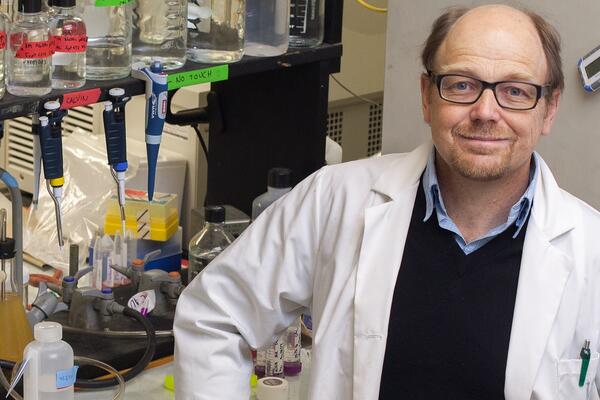Professor Mark Servos and his team have been working since early in the pandemic to develop and validate methods to detect the SARS-CoV-2 virus in municipal wastewater. They have received financial support to run wastewater surveillance and measure COVID-19 and its variants in municipal wastewater and are providing rapid turnaround for more than ten locations across Ontario.
The team’s work is part of the provincial government’s $12-million wastewater surveillance initiative, announced today at the University of Waterloo by Jeff Yurek, Minister of Environment Conservation and Parks.
How do you find COVID-19 in wastewater? How does the process work?
Once released in stool, the virus is degraded as it enters the wastewater collections systems. The gene fragments of the SARS-CoV-2 virus move through the sewer and enter the headworks of the municipal wastewater treatment plants.
The method includes separating and isolating the virus fragments from the wastewater using centrifugation and chemical separations, then amplification and detection with quantitative reverse-transcription polymerase chain reaction (qPCR). Unlike detection in humans, the wastewater is a complex mixture that makes detection at low levels very difficult.
Are the levels you find in wastewater more accurate than the daily case counts from Public Health Units?
This approach is complementary to the process of acquiring the daily case counts people see on the news. It’s not “more accurate” or “less accurate,” it’s another way to understand how COVID-19 is spreading through communities. A key advantage of this approach is that it is independent of community testing of individuals and can be used to monitor thousands or even millions of people in the community at the same time.
What is the advantage of having wastewater data for scientists, the public?
By sampling the untreated wastewater, the team is able to detect changes in the load of SARS-CoV-2 that are directly related to the cases in the communities. This approach provides the public health agencies another tool to monitor the occurrence of community infections that is independent of the testing of individuals. To date, the techniques have proven to be effective at detecting the increase in cases in late summer and the second wave of infections earlier this fall in regions of western Toronto like Peel.
Our work, in collaboration with other labs across Canada, is advancing our understanding of the pandemic and providing additional complimentary tools that can be applied to follow changes and trends in the prevalence of COVID-19 infections in communities. Research is focused on refining the method to better support our public health officials and protect our communities.
The University of Waterloo has a number of experts available for comment on various aspects of the COVID-19 pandemic, click here to see the up-to-date list.








